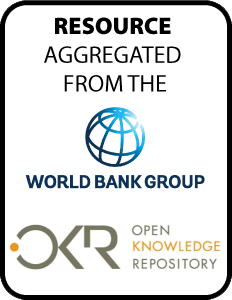Resource information
Key economic variables in Cote
d'Ivoire vary widely from their long-run trends, moving
in multi-year cyclical patterns. Cocoa prices move with
cycles in growth rates, capital stock, real exchange rates,
terms of trade, cocoa production, and coffee production and
output. These patterns have become more pronounced since the
1970s as volatility increased. This paper characterize these
cycles, estimates the cocoa price-quantity relationship, and
analyzes co-movements due to shocks generate a forecast.
Three key conclusions follow. First, the economy of Cote
d'Ivoire has experienced two fundamental transitions,
one in 1976 related to cocoa, and another in 1994 related to
exchange rates. From 1960 to 1976, world cocoa prices grew
steadily, and then fell in real terms. The country's
growth showed a similar pattern. An econometric model
indicates that the relationship between cocoa price and
quantity experienced a break in 1976 and provides evidence
of Cote d'Ivoire's significant influence on world
cocoa prices. Second, cocoa price shocks affect growth rates
and trade indicators, and are important sources of
volatility in the Cote d'Ivoire. The terms of trade and
real exchange rate are also sources of volatility for growth
and productivity. Third, a forecast of per-worker output
based on these variables predicts continued declines in GDP
per worker in Cote d'Ivoire for the near future. This
dismal forecast implies the need for a radical and rapid
improvement on political, security, and economic management
to reverse the two and a half decades of economic decline.


